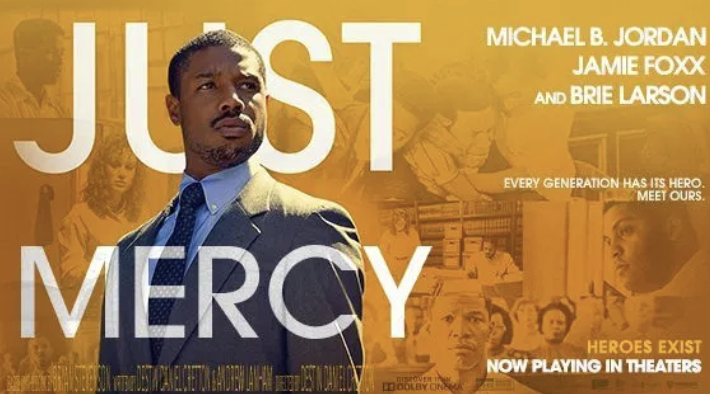[et_pb_section fb_built=”1″ make_fullwidth=”on” specialty=”on” padding_top_1=”-25px” padding_top_2=”-25px” padding_left_1=”50px” padding_left_2=”50px” module_class=”ds-fullwidth-specialty” _builder_version=”3.0.85″ custom_padding=”15px|50px|20px|0px”][et_pb_column type=”2_3″ specialty_columns=”2″ _builder_version=”3.0.47″ padding_left__hover=”50px” padding_top__hover=”-25px” parallax__hover=”off” parallax_method__hover=”on” padding_left=”50px” padding_top=”-25px” parallax=”off” parallax_method=”on”][et_pb_row_inner admin_label=”Row” _builder_version=”3.0.85″][et_pb_column_inner type=”4_4″ saved_specialty_column_type=”2_3″ _builder_version=”3.0.47″ parallax__hover=”off” parallax_method__hover=”on” parallax=”off” parallax_method=”on”][et_pb_post_title author=”off” comments=”off” featured_image=”off” _builder_version=”3.0.86″ title_font=”|700||on|||||” title_text_align=”center” title_font_size=”42px” meta_text_align=”center” meta_font_size=”18″ text_orientation=”center” custom_margin=”-10px|||” custom_padding=”|||”][/et_pb_post_title][/et_pb_column_inner][/et_pb_row_inner][et_pb_row_inner admin_label=”Row” _builder_version=”3.0.47″][et_pb_column_inner type=”4_4″ saved_specialty_column_type=”2_3″ _builder_version=”3.0.47″ parallax__hover=”off” parallax_method__hover=”on” parallax=”off” parallax_method=”on”][et_pb_text _builder_version=”3.0.86″]
N
early two dozen eager but slightly skeptical faces greet attorney Bryan Stevenson when he visits client Walter McMillian’s family in his book Just Mercy. Stevenson dedicates his time to answering their questions and listening to their concerns of Walter being on death row, and their cries for his innocence.
“I feel like they done put me on death row, too,” McMillian’s older sister Armelia Hand says. “What do we tell these children about how to stay out of harm’s way when you can be at your own house, minding your own business, surrounded by your entire family, and they still put some murder on you that you ain’t do and send you to death row?”
Translated into film, the scene radiates a similar energy of community and perseverance. The family is crowded around a wooden table, with Stevenson sitting at the head, dressed in a smoothly ironed baby blue shirt and black cross-stitched collar. Some family members sit with arms crossed while others stand, hovered around the table, loud pitched sounds echoing as Stevenson takes notes. In front of him is a glass of sweet iced tea, continuously refilled to the brim by an older woman, who could be a relative or neighbor of McMillian’s.
This year’s summer reading book Just Mercy hit the big screens on Jan. 10 in theaters nationwide. The film adaptation stars Michael B. Jordan as Stevenson and Jamie Foxx as McMillian, an Alabama man sentenced to wait on death row for a murder he did not commit in 1987. Stevenson represents him while developing the Equal Justice Initiative (EJI) to provide legal representation for prisoners alongside Eva Ansley, who is played by Brie Larson.
While I liked the book, the film provided something the print could not. The small details sprinkled throughout the adaptation reflect the accuracy of the film compared to Stevenson’s book. More broadly, they show how scenes in books can be elevated through visual representations.
[/et_pb_text][/et_pb_column_inner][/et_pb_row_inner][et_pb_row_inner admin_label=”Row” _builder_version=”3.0.47″][et_pb_column_inner type=”4_4″ saved_specialty_column_type=”2_3″ _builder_version=”3.0.47″ parallax__hover=”off” parallax_method__hover=”on” parallax=”off” parallax_method=”on”][et_pb_testimonial author=”Valerie B. ’21” text_orientation=”center” quote_icon_color=”#0083b6″ _builder_version=”3.16″ body_text_color=”#0083b6″ body_font_size=”24″ body_text_shadow_horizontal_length=”0em” body_text_shadow_vertical_length=”0em” body_text_shadow_blur_strength=”0em” box_shadow_style=”preset1″ custom_padding=”75px|50px||50px” animation_style=”fade”]
[Stevenson] blends in facts and historical context of the criminal justice system and mass incarceration, providing readers with a completed perspective.
[/et_pb_testimonial][/et_pb_column_inner][/et_pb_row_inner][et_pb_row_inner admin_label=”Row” _builder_version=”3.0.47″][et_pb_column_inner type=”4_4″ saved_specialty_column_type=”2_3″ _builder_version=”3.0.47″ parallax__hover=”off” parallax_method__hover=”on” parallax=”off” parallax_method=”on”][et_pb_text _builder_version=”3.0.86″]
This book touched on difficult and hard to imagine topics when I read it over the summer, vividly describing an electric chair execution and the harsh conditions on death row. All of Stevenson’s experiences ultimately shed light on the issues deeply ingrained in America’s criminal justice system, including prejudiced courts and overcrowding of prisons.
Stevenson crafts a rich nonfiction novel, that weaves together his own journey founding the EJI and the death row cases he takes on over the years, but always returns to the story of Mcmillian. More subtly, Just Mercy reveals Stevenson’s personal quest with finding peace in the midst of fighting for justice.
In the movie, director Daniel Cretton addresses a lot of the book’s similar themes in a way understandable to the public, sparking movement and sound into the book’s sometimes frozen scenes. He makes it emotionally moving and uplifting, invoking a range of human emotions, including frustration and hopefulness.
The heart-wrenching acting plays a major part in that emotional adaptation. Both Jordan’s and Foxx’s performances bring the main characters to life, painting their characters in an authentic and raw way, impossible to grasp in the books. Foxx, in particular, gets at the core of McMillian’s persona, portraying a man who holds a multitude of rage inside of him, but also who acts with intention and thoughtfulness.
[/et_pb_text][/et_pb_column_inner][/et_pb_row_inner][et_pb_row_inner admin_label=”Row” _builder_version=”3.0.47″][et_pb_column_inner type=”4_4″ saved_specialty_column_type=”2_3″ _builder_version=”3.0.47″ parallax__hover=”off” parallax_method__hover=”on” parallax=”off” parallax_method=”on”][et_pb_testimonial author=”Alegria Barclay” job_title=”PreK-12 Equity & Social Justice Director” text_orientation=”center” quote_icon_color=”#0083b6″ _builder_version=”3.16″ body_text_color=”#0083b6″ body_font_size=”24″ body_text_shadow_horizontal_length=”0em” body_text_shadow_vertical_length=”0em” body_text_shadow_blur_strength=”0em” box_shadow_style=”preset1″ custom_padding=”75px|50px||50px” animation_style=”fade”]
It addressed a lot of the themes we were interested in, notions of redemption and justice and compassion and kindness, so things that felt relevant to the community but were also outward-facing.
[/et_pb_testimonial][et_pb_text _builder_version=”3.0.86″]
PreK-12 Equity & Social Justice Director Alegria B. was one of the faculty members who collaborated on deciding the summer reading book. At the time, no one knew of its future movie adaptation. The other members on the summer reading task force, a group of faculty that included the grade deans, librarian, and writing teachers, all read the text before choosing it and found it to be transformative and lyrical.
If parts of Just Mercy were difficult to read without becoming disengaged, the adaptation provides an authentic representation of the text, and is constructed beautifully to hold the audience’s attention of a story that is somewhat unfathomable.
[/et_pb_text][/et_pb_column_inner][/et_pb_row_inner][/et_pb_column][et_pb_column type=”1_3″ _builder_version=”3.0.47″ padding_left__hover=”50px” padding_top__hover=”-25px” parallax__hover=”off” parallax_method__hover=”on” padding_left=”50px” padding_top=”-25px” parallax=”off” parallax_method=”on”][et_pb_team_member name=”Written by Valerie B.” position=”Staff Writer” image_url=”http://www.thenuevacurrent.com/wp-content/uploads/2020/03/Screen-Shot-2020-03-16-at-8.33.43-PM.png” linkedin_url=”www.linkedin.com/in/scott-brasesco/” _builder_version=”3.16″ header_font=”|700|||||||” custom_margin=”||50px|”][/et_pb_team_member][et_pb_sidebar area=”sidebar-main” _builder_version=”3.0.85″][/et_pb_sidebar][/et_pb_column][/et_pb_section]


Leave a Reply